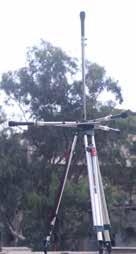
Modern gun-battles are rarely waged on open ground where enemies face each other, and the origin of unfriendly and friendly fire are easy to locate. Instead, most combats are now staged in obstacle-dense situations like cities, forests and mountain valleys, where the location of a shooter may be difficult to pinpoint aurally due to reverberations. More importantly, our security forces may not even be present within audible range of all gunshots at all times, due to the highly mobile nature of modern combat. However, in these situations, the personnel would still desire real-time knowledge of the origin of unfriendly fire so as to prepare prompt and effective counter-measures.
We are developing a system that can robustly detect and localise gunshots based on acoustics in scenarios of relevance to internal security. A minimal number of low-cost microphones and associated electronic circuitry distributed over the zone of conflict will feed into an efficient real-time algorithm with minimal human interaction. A picture of a tetrahedral microphone array prototype is shown below.
The acoustic signature of a gunshot consists of two parts. The explosion of the propellant that discharges the bullet is called the ‘muzzle blast’, and the resultant acoustic waves travel spherically outward from the end of the muzzle. If the bullet travels with supersonic speed, then an additional shock wave is generated that trails as a cone behind the bullet. The two signatures can be distinguished in the microphone signal, and they can be used in concert to pinpoint the location of the shooter. In particular, the algorithms that apply to the muzzle blast are closely related to those used in Global Positioning Systems (GPS). The figure below presents the microphone signal recorded in experiment where an AK-47 rifle was fired. The shock wave from the supersonic bullet arrives at the microphone before the muzzle blast reaches it. The ground reflection from these events are also captured.
Robust algorithms that pinpoint the muzzle blast are being validated using firecracker explosion experiments preliminarily. Parallely, we are developing a stand alone microprocessor-based hardware implementation of the localisation system. The final system is intended to be sufficiently automated and intuitive so that the users can concentrate more on the mission at hand.
Prof. Aniruddha Sinha
